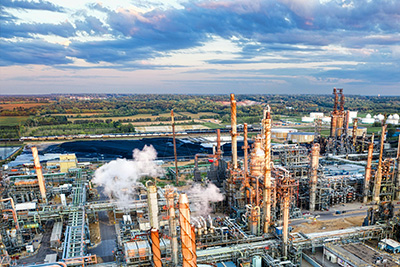-
![The Role of Revers···]() 2024-12-03 The Role of Reverse Ester Tin in Hig···
2024-12-03 The Role of Reverse Ester Tin in Hig···Reverse ester tin plays a crucial role in enhancing the performance of polymer additives. These additives, when incorporated into polymers, improve properties such as thermal stability, transparency, and processability. Reverse ester tin acts as an efficient catalyst and heat stabilizer, particularly in PVC applications. Its unique characteristics enable it to effectively prevent degradation during processing and use, ensuring longer product lifespan and better quality. Thus, reverse ester tin is indispensable in developing high-performance polymers for various industries.
read more > -
![Advanced Reactor D···]() 2024-12-02 Advanced Reactor Designs for Reverse···
2024-12-02 Advanced Reactor Designs for Reverse···Advanced reactor designs for reverse ester tin processing offer significant improvements in efficiency and product yield. These innovations focus on optimizing heat and mass transfer, enhancing catalyst performance, and reducing byproduct formation. Key features include modular construction, improved mixing mechanisms, and integrated process control systems. By employing these advanced reactors, the process can achieve higher conversions, lower energy consumption, and reduced environmental impact compared to traditional methods. This advancement paves the way for more sustainable and economically viable production of ester tin compounds.
read more > -
![Tin-Based Catalyst···]() 2024-12-02 Tin-Based Catalysts: Essential Prope···
2024-12-02 Tin-Based Catalysts: Essential Prope···Tin-based catalysts play a crucial role in reverse esterification reactions, offering significant advantages in terms of efficiency and selectivity. These catalysts exhibit essential properties such as high reactivity, stability under various reaction conditions, and the ability to promote specific pathways that enhance product yields. Tin compounds, including tin(II) salts and tin(IV) oxides, have been extensively studied for their catalytic performance in synthesizing esters from carboxylic acids and alcohols. The unique electronic configuration of tin atoms facilitates the formation of intermediates that are key to the esterification process. Additionally, the ease with which tin-based catalysts can be recovered and reused makes them environmentally friendly and economically viable options for industrial applications.
read more > -
![Reverse Ester Tin ···]() 2024-12-02 Reverse Ester Tin Catalysts: Effect ···
2024-12-02 Reverse Ester Tin Catalysts: Effect ···The article explores the impact of reverse ester tin catalysts on reaction rates and product quality in chemical synthesis processes. These catalysts, known for their unique properties, significantly enhance the efficiency and selectivity of reactions. The study demonstrates that the use of reverse ester tin catalysts leads to faster reaction times and improved product quality compared to conventional catalysts. This advancement could potentially revolutionize various industrial applications by offering a more effective and environmentally friendly alternative.
read more > -
![Economic Analysis ···]() 2024-12-02 Economic Analysis of Reverse Ester T···
2024-12-02 Economic Analysis of Reverse Ester T···This study conducts an economic analysis of reverse ester tin supply chains, focusing on cost structures, market dynamics, and sustainability factors. It examines the efficiency of recycling processes and their impact on reducing production costs compared to traditional methods. The analysis reveals that reverse supply chains can significantly lower environmental impacts while maintaining competitive economic benefits. Key findings indicate potential cost savings and environmental advantages through optimized recycling techniques and enhanced supply chain management.
read more > -
![Reverse Ester Tin ···]() 2024-12-02 Reverse Ester Tin in Industrial Coat···
2024-12-02 Reverse Ester Tin in Industrial Coat···The article explores the innovative use of reverse ester tin in industrial coatings, highlighting its potential for enhancing performance and sustainability. This technology offers improved adhesion, durability, and resistance to corrosion compared to traditional coatings. Additionally, it presents environmental benefits by reducing volatile organic compounds (VOCs) and lowering energy consumption during application. The study discusses new applications across various industries, including automotive, aerospace, and construction, demonstrating significant advantages in efficiency and cost-effectiveness. Overall, the adoption of reverse ester tin in industrial coatings marks a promising advancement towards more robust and eco-friendly coating solutions.
read more > -
![Key Trends in Reve···]() 2024-12-02 Key Trends in Reverse Ester Tin for ···
2024-12-02 Key Trends in Reverse Ester Tin for ···Reverse esterification in the plastics industry is marked by several key trends. Innovations in catalyst technology are enhancing the efficiency and reducing the environmental impact of the process. There is a growing emphasis on sustainability, driving the development of biodegradable plastics through reverse esterification. Additionally, advancements in process automation and digitalization are optimizing production outputs and quality control. Regulatory pressures and a shift towards greener manufacturing practices are also steering the industry toward more sustainable solutions. These trends collectively underscore the industry's move towards more efficient, eco-friendly, and technologically advanced production methods.
read more > -
![Importance of Tin ···]() 2024-12-02 Importance of Tin Purity in Industri···
2024-12-02 Importance of Tin Purity in Industri···The purity of tin plays a critical role in the industrial synthesis of esters. Impurities in tin can catalyze undesirable side reactions, leading to impure ester products and reduced yields. High-purity tin ensures efficient and selective esterification, optimizing reaction conditions and enhancing overall process efficacy. Thus, maintaining stringent purity standards for tin is essential for producing high-quality esters in industrial settings.
read more > -
![Catalyst Regenerat···]() 2024-12-02 Catalyst Regeneration Techniques for···
2024-12-02 Catalyst Regeneration Techniques for···Catalyst regeneration techniques play a crucial role in enhancing the efficiency and sustainability of reverse esterification processes involving tin catalysts. These methods aim to restore the catalytic activity of spent catalysts, thereby reducing costs and environmental impact. Various approaches, such as thermal treatment, chemical reactivation, and solvent extraction, have been explored. Thermal treatment involves heating the catalyst to remove deactivating agents, while chemical reactivation uses specific chemicals to rejuvenate the catalyst’s active sites. Solvent extraction helps in removing accumulated by-products and residues. The choice of technique depends on the specific process conditions and catalyst characteristics. Overall, these regeneration strategies significantly extend catalyst lifespan and improve process economics.
read more >










